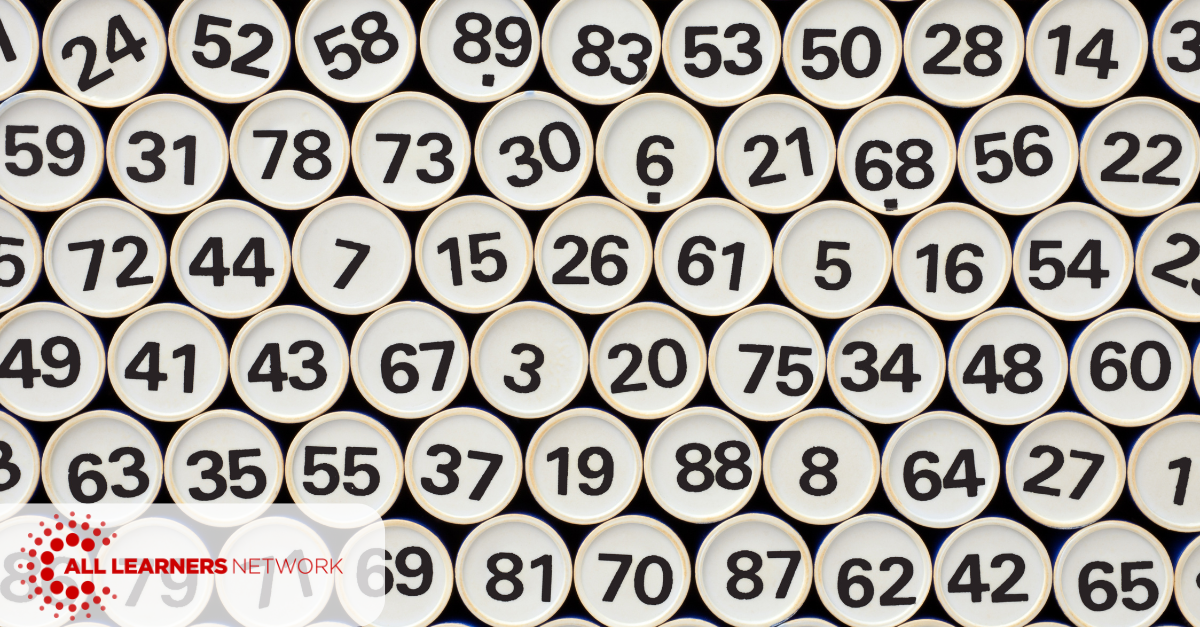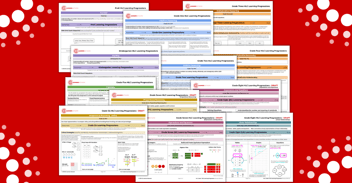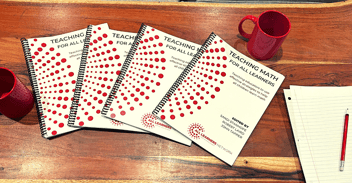
More Than Tens and Ones. Supporting Students' Place Value Understanding
Published: October 4, 2024
What number is in the tens place? What digit is in the hundreds place?
These are common place value questions heard frequently in classrooms. They depend on a student’s ability to memorize which place is which. Even if students answer these questions correctly, it doesn’t necessarily mean they understand place value. True understanding of place value involves much more than rote memorization of where digits are placed. Below are six key concepts of place value to consider when supporting students in developing a deeper understanding of this concept.
Number Visuals
What comes to mind when you think of the number 45? Do you see the digits 4 and 5? Do you visualize 45 things arranged in 10 frames? Or perhaps a sketch of 4 lines and 5 dots? Many adults think of the abstract representation of 45 using the digits 4 and 5. However, when working with students, we need to connect these abstract symbols to concrete and representational models. We want students to think flexibly about numbers like 45 and to have multiple representations to draw from. Providing opportunities for students to build numbers with concrete tools, sketch representations of these tools, and link these models to the abstract notation of digits is crucial.
Through model use, we can also uncover misconceptions about digits values. It is not unusual for some students to look at the number 45 and say “fifty-four” or “there are 5 tens and 4 ones in 45”. When students use models to support their understanding of place value, they often discover their errors themselves. The models make the value of the total number visible and accessible.
Models
There are many options for concrete tools to use with students. Schools often have a variety of hands-on tools to represent numbers, including loose counters, base ten pieces, place value disks, coins, digi blocks, ten frames, and number racks. When choosing a tool, consider the following:
Some concrete tools are proportional, meaning the representation of 10 is 10 times larger or requires 10 times more space than the representation of 1. Examples include base ten pieces, ten frames, digit blocks, and number racks. Other tools are non-proportional, meaning the piece representing 10 is not 10 times larger than the piece representing 1. Examples include coins and place value disks. To truly grasp place value, students need ample interaction with proportional, hands-on objects.
Another factor to consider is whether a tool is pre-grouped or groupable. Pre-grouped items are already in units of 1’s, 10’s, and 100’s. To go from a group of ten to ten groups of one, students must trade pieces rather than simply decompose them. A popular example of this type of tool is base ten pieces. Groupable options, where students can use 10 items to build a ten and represent both 1 ten and 10 ones simultaneously, include loose objects on ten frames, digit blocks, craft sticks, and number racks. Students should interact with groupable models to develop a robust understanding of place value. Jumping directly to pre-grouped items can hinder their ability to compose or decompose numbers naturally.
When students are first grappling with place value ideas, the best model will be proportional and groupable. As kids’ understanding of place value concepts grows and they start thinking about larger numbers, other models may become more practical. If a student is struggling with place value ideas, going back to a groupable, proportional model can support kids having moments of insight.
Unitizing
Unitizing is a foundational concept in mathematics that develops in young children learning about place value. It refers to the idea that the amount you have changes based on the size of the unit you are counting. This concept becomes apparent when students count and group objects by tens. For instance, when a student reaches 30 objects, they can describe this as 30 individual objects or 3 tens. Understanding that 30 can be viewed as 3 tens and 30 ones simultaneously represents a significant cognitive leap. Using proportional, groupable models can help students gain insight into this idea. As students move through elementary school, they will build upon the idea of unitizing as they begin to play around with multiplication and fractions.
One and Two More and Less
Students with a strong understanding of place value can determine one or two more or less for various numbers. As their sense of unitizing develops, we want them to find one or two units (tens, hundreds, etc.) more or less. Engaging students with concrete tools can make this concept more interesting. For example, using ten frames and asking students, “What would happen if we added ten more?” and then adding ten more objects is an effective and engaging way to develop this understanding.
Benchmarks
Certain numbers like 5, 10, 20, 100, and 1000 serve as excellent benchmarks for students as they build their understanding of the place value system. Asking students how many more or how many fewer they need to reach these benchmarks helps deepen their place value understanding and fosters connections between place value and operations. Reasoning about how far away one number is from a benchmark number can help form the basis for relational thinking that will support students’ understanding of subtraction as finding the difference between numbers.
Part-Part-Whole
The ability to represent a number like 53 in multiple ways underpins part-part-whole thinking. Students will start to see 53 as 5 tens and 3 ones, but what about 4 tens and 13 ones? Or 10 and 43? Decomposing and recomposing numbers in various ways helps deepen students' understanding of the place value system and supports the development of flexible strategies for adding and subtracting numbers. This is another opportunity for students to support their developing understanding of unitizing with models.
Understanding place value goes far beyond knowing which digit is in the tens or ones places. Students need to interact with concrete tools that are proportional and groupable before moving on to other tools. We need to build numbers and ask questions to challenge and expand students' thinking about the numbers around them.
Want specifics about where place value understanding starts and how it develops? Check out our learning progressions which highlight the big ideas of place value play out through the primary grades.
Click here for the printable version.
What Now?
1. Explore the ALN Lesson Structure, a teaching framework so everyone can learn math with conceptual understanding.
2. Read our blog “The Role of Models in Conceptual Math Understanding” to learn more.
3. Bring All Learners Network (ALN) into your school or district for embedded professional development.

All Learners Network is committed to a new type of math instruction. We focus on supporting pedagogy so that all students can access quality math instruction. We do this through our online platform, free resources, events, and embedded professional development. Learn more about how we work with schools and districts here.




